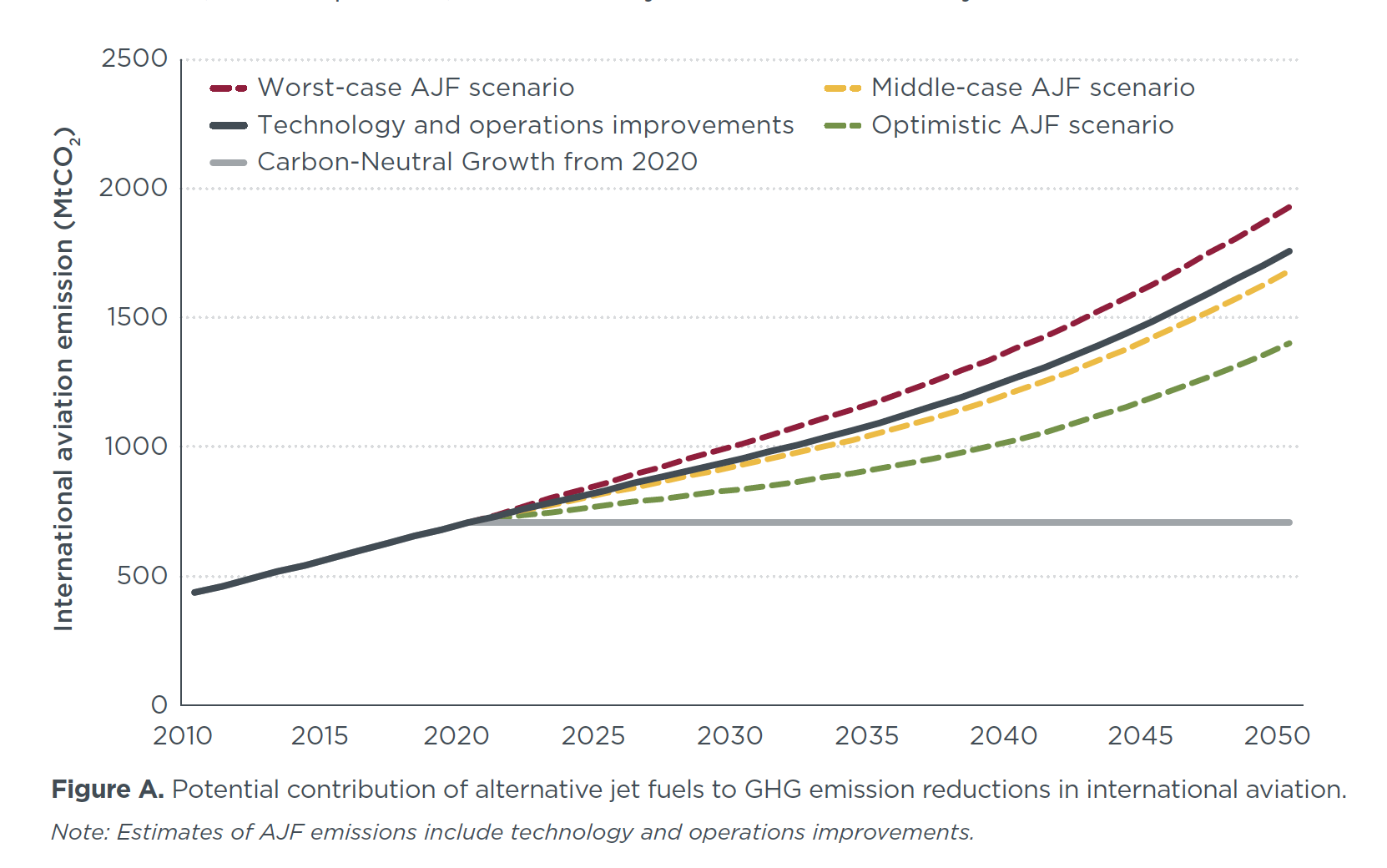White paper
Mitigating international aviation emissions: Risks and opportunities for alternative jet fuels
The aviation sector—and its associated GHG emissions—are projected to grow at an exponential rate over the next several decades. To mitigate this rise in emissions, some have touted alternative jet fuels (AJF) are promoted by as a key component of reducing the sector’s emissions and ideally, implementing carbon-neutral growth beyond 2020. This study evaluates the potential opportunities and risks for AJFs by assessing their sustainability, cost, and constraints to deployment. A literature review of various life-cycle assessments of the carbon intensity of AJF fuels shows that AJF produced from vegetable oil-based feedstocks tend to have a higher carbon intensity than conventional jet fuel when land-use change effects are taken into consideration, and that only AJF from lignocellulosic energy crops, agricultural residues and waste feedstocks are shown to provide substantial emission reductions compared to conventional jet fuel.
The feedstocks that provide the largest carbon reductions in AJFs are constrained in their supply and will likely also be in demand from competing sectors such as road transport. Estimates for maximum availability of sustainable AJF feedstocks reveal that it would be impossible to substitute total jet fuel consumption with AJF up to 2050 or attain carbon-neutral growth through AJF only. Although estimated demand for jet fuel amounts to 24–37 EJ in 2050, the absolute maximum amount of lignocellulosic biofuel that could be available for the aviation sector is around 4 EJ in 2050, resulting in emission reductions up to around 360 million tonnes CO2. The actual amount of low carbon AJF that will be available is likely much lower.
This study finds that the large-scale deployment of AJF and the ability of the aviation sector to mitigate emissions through their use will be limited by several factors, mainly: the sustainability and availability of feedstock, the production cost, and the extent to which those fuels will be commercialized. A literature review on estimated production costs of AJF for all pathways and feedstocks reveals that they are not commercially competitive with petroleum-derived jet fuel. Furthermore, the airlines’ price sensitivity relative to the road sector presents a possible disparity in terms of the aviation industry’s ability to support production costs as high as competing sectors.

